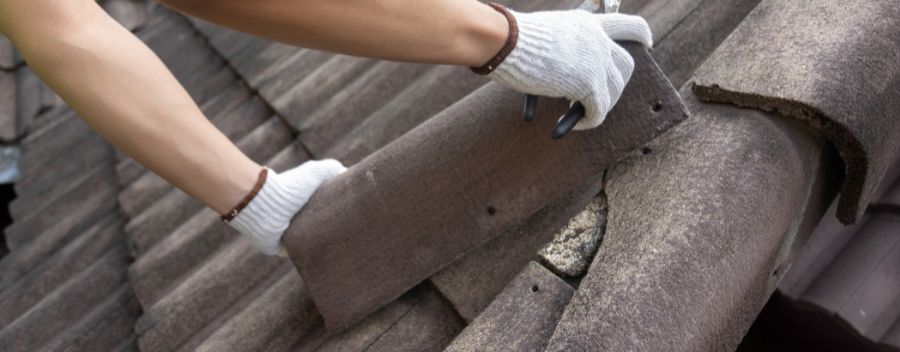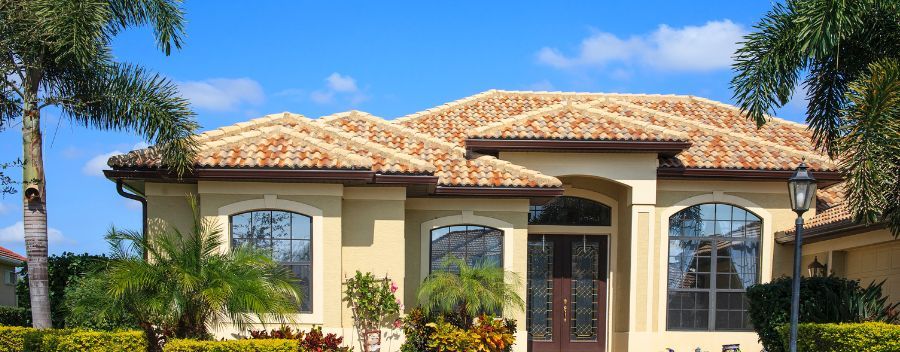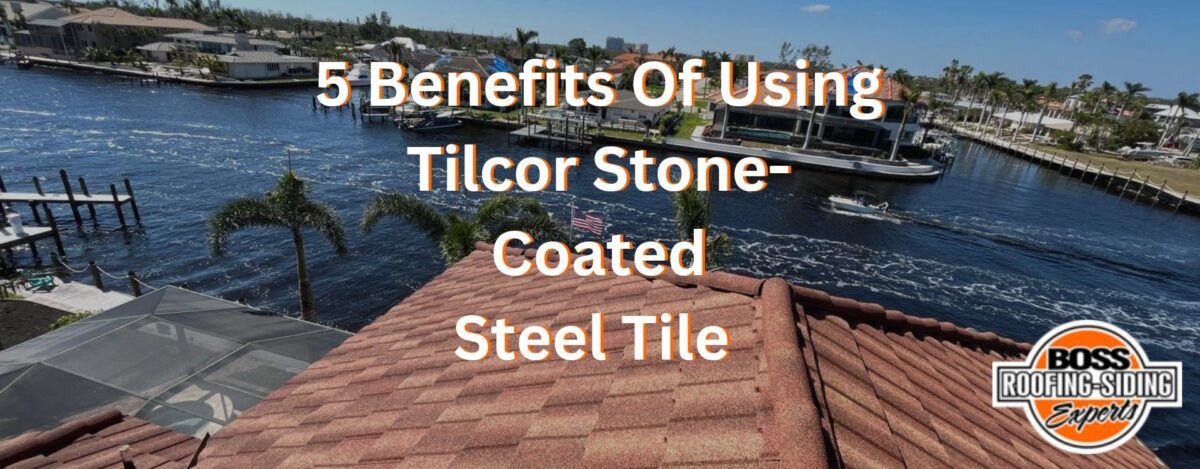What Is the Average Cost of Tile Roofing Installation in Fort Myers, FL?
The average cost of tile roofing installation in Fort Myers, FL, ranges from $15,000 to $30,000, depending on factors such as roof size, tile type, and installation complexity. In Fort Myers, where the hot and humid climate can be challenging for many roofing materials, tile roofs stand out for their durability and ability to keep homes cooler.
With frequent rainstorms and the potential for hurricanes, homeowners in Fort Myers prioritize roofing solutions that offer resilience and longevity. Tile roofing not only meets these needs but also adds a distinctive aesthetic that complements the coastal and Mediterranean-style homes prevalent in the area.
So, what is the average cost of tile roofing installation in Fort Myers, FL? Let’s dive into the specifics of tile roofing, its advantages, cost, and why it’s a superior choice for homes in Fort Myers.
Tile Roofing Installation in Fort Myers: Cost Factors
When considering tile roofing installation in Fort Myers, it’s important to understand the various factors that can influence the overall cost. Whether you opt for a classic clay tile or the more luxurious slate, these elements determine your final expense.
Type of Tile
The type of tile you choose is one of the most significant cost determinants in roofing installation. Each one has its own set of perks and price tags:
Clay Tiles
Known for their durability and aesthetic appeal, clay tiles are a popular choice in Fort Myers due to their resistance to heat and ability to maintain a cooler indoor environment. They are made from natural clay fired at high temperatures. This makes them highly durable and available in various earthy tones, adding a rustic charm to homes.
However, clay tiles are generally more expensive than other options, primarily because of their material quality and the labor required for proper installation. They usually cost between $10 to $18 per square foot.
Concrete Tiles
For homeowners looking for a more budget-friendly option, concrete tiles are a viable alternative. Made from sand, cement, and water, concrete tiles are highly customizable in terms of shape and color. They provide excellent strength and weather resistance. They resemble clay tiles but come at a lower cost.
Concrete tiles typically range from $8 to $12 per square foot. While they are heavier and require a sturdy roof structure, they provide excellent durability and weather resistance.
Slate Tiles
Slate is a natural stone cut into tiles, offering a sophisticated and upscale look. These tiles are versatile in terms of color and pattern and can last over a century.
However, these advantages come at a higher price, making slate the most costly option, ranging from $20 to $40 per square foot. The installation process is challenging and needs specialized skills, which can drive up the cost.
Roof Size and Complexity
The size and design of your roof significantly impact the overall installation costs. Here are some considerations:
- Roof Size: Naturally, larger roofs require more materials, which directly increases the cost. The measurement is typically done in squares, with one square equating to 100 square feet.
- Complexity of Design: A simple, flat roof will be less expensive to cover compared to a complex design with multiple slopes, valleys, or intricate features. Roofs with steep pitches or complicated layouts require additional labor and safety measures, such as scaffolding or harnesses, which add to the cost.
- Roof Access: If your roof is difficult to access, whether due to height, surrounding landscaping, or other obstacles, the installation may require special equipment or additional time, increasing labor costs.
Labor Costs
Labor is another critical component that affects the cost of tile roofing installation. The skill and experience of the roofing crew can make a substantial difference in both price and quality:
Skilled Labor Requirements
Installing tile roofing is not a task for the average handyman; it requires a skilled and experienced team. Proper installation ensures that the roof is weather-tight, aesthetically pleasing, and long-lasting. Labor costs in Fort Myers can range from $50 to $100 per hour, depending on the complexity of the job and the contractor’s expertise.
Crew Size and Duration
Larger projects or those with complex designs may require a larger crew or more extended hours, which can increase overall labor expenses. It’s essential to get a detailed quote that outlines labor hours and the number of workers expected on the job.
Quality of Workmanship
Investing in experienced installers may have a higher upfront cost, but it pays off in the long term. Poor installation can lead to issues such as leaks, tile slippage, or inadequate ventilation, resulting in costly repairs down the line.
Additional Considerations
Beyond the primary factors of tile type, roof size, and labor, other elements can influence the total cost:
- Underlayment and Flashing: High-quality underlayment and flashing are critical for the longevity of your roof. They provide additional protection against water infiltration and help manage heat and moisture. Upgrading these materials can slightly increase costs but offer significant long-term benefits.
- Permits and Inspections: Local regulations in Fort Myers may require permits or inspections for roofing installations, which add to the cost. Your roofing contractor should handle these requirements, but it’s essential to account for these fees in your budget.
- Removal of Old Roofing: If your current roof needs to be removed before installing the new tiles, this can add an extra layer of labor and disposal fees. The existing roof’s condition will determine the complexity of removal and the associated costs.
Understanding these cost factors can help you better plan your tile roofing installation in Fort Myers. By considering your budget, the specific requirements of your roof, and the expertise of your chosen contractor, you can ensure a high-quality tile roof installation.
Why Tile Roofs Are Superior
Tile roofs offer numerous advantages over other roofing materials, making them a top choice for many homeowners. Let’s explore the reasons why tile roofs stand out:
Durability and Longevity
Unlike other roofing materials that may need to be replaced every 15-20 years, tile roofs can last 50 years or more with proper maintenance. This longevity makes them a cost-effective choice in the long run, as the need for frequent replacements is significantly reduced.
Resistance to Weather Elements
These roofs are resistant to harsh weather conditions. Tile roofing is built to withstand high winds, heavy rain, and even hail. This resilience makes it ideal for the unpredictable weather patterns often experienced in Florida, providing homeowners peace of mind.
Energy Efficiency
Tile roofs are also highly energy-efficient and provide good insulation. This efficiency can lead to lower energy bills, making tile roofing not just a durable option but also an environmentally friendly one.
Aesthetic Appeal
Tile roofs add a distinctive and elegant look to any home. Available in various styles, colors, and finishes, they can complement a wide range of architectural designs. Whether you prefer the classic look of Spanish-style clay tiles or the sleek appearance of concrete tiles, there is a tile roof option that can enhance your home’s curb appeal.
What Makes Tile Roofs a Good Choice for Fort Myers Homeowners
Tile roofs have several unique attributes that set them apart from other roofing materials. Here’s a closer look at what makes tile roofing a superior choice:
Versatility in Design
Tile roofs come in a variety of shapes, sizes, and colors, allowing homeowners to customize their roofs to match their home’s architectural style. From classic barrel tiles to flat tiles that imitate the look of slate, the design possibilities are endless. They look excellent in both contemporary and traditional residences.
Fire and Insect Resistance
Tile roofing is naturally resistant to fire, which can be a crucial factor for homeowners concerned about safety. Additionally, tile roofs are impervious to insect damage, unlike wooden shingles, which can be vulnerable to termites and other pests.
Low Maintenance Requirements
While all roofs require some level of care, tile roofs are relatively low maintenance compared to other options. The tiles themselves are tough and can withstand a lot of wear and tear, reducing the need for frequent repairs.
Eco-Friendly Material
Tile roofs are made from natural materials such as clay or concrete, which are both sustainable and environmentally friendly. These materials can be recycled, reducing the environmental impact when it’s time to replace the roof. Moreover, the energy efficiency of tile roofs contributes to a lower carbon footprint for your home.
Tile Roofing Installation Process
The installation of tile roofing requires expertise due to the weight and fragility of the tiles. The process typically involves:
- Preparation of the Roof Deck: Ensuring the roof deck is structurally sound to support the weight of the tiles.
- Underlayment Installation: A waterproof underlayment is installed to provide additional protection against moisture.
- Tile Placement and Securing: Tiles are carefully placed and secured with nails or adhesive, depending on the type of tile and roof design. Proper spacing and alignment are crucial to ensure the roof’s durability and aesthetics.
Tile Roofing Maintenance Tips
Maintaining a tile roof is relatively straightforward, but following a few key tips can help prolong its lifespan and maintain its appearance:
- Cleaning the Roof: Keep your tile roof clean by removing debris such as leaves and branches. This prevents moss and algae growth, which can affect the roof’s appearance and integrity.
- Repairing Cracked or Broken Tiles: If you notice any cracked or broken tiles, have them replaced promptly. Damaged tiles can compromise the roof’s waterproofing and lead to leaks.
- Professional Maintenance: A professional roofing contractor for periodic maintenance can conduct thorough inspections, clean the roof, and perform any necessary repairs to keep your tile roof in optimal condition.
Boss Roofing Experts: The Right Roofer for Your Fort Myers Project
Tile roofing is an excellent investment for homeowners in Fort Myers, offering unmatched durability, energy efficiency, and aesthetic appeal. Whether you’re looking to enhance your home’s curb appeal or protect it from the elements, tile roofing provides a long-lasting solution. In a city like Fort Myers, where weather conditions can be unpredictable, having a reliable roof is crucial.
If you’re considering tile roofing installation, contact Boss Roofing Experts. Our team of professionals is ready to provide you with expert advice and top-notch installation services, ensuring your tile roof not only looks great but also performs exceptionally for decades to come. Call us today to get started on your tile roofing project!
FAQ Section
How long does a tile roof last in Fort Myers, FL?
Tile roofs can last 50 years or more in Fort Myers, thanks to their durability and resistance to the local climate, including high winds and heavy rains.
Are tile roofs energy-efficient?
Yes, tile roofs provide excellent insulation, helping to reduce energy costs by keeping Fort Myers homes cooler in the summer and warmer in the winter.
How much maintenance do tile roofs require?
Tile roofs require relatively low maintenance, mainly involving regular inspections, cleaning, and prompt repair of any damaged tiles.
Can tile roofs withstand hurricanes?
Tile roofs are highly resistant to high winds and can withstand hurricane conditions when properly installed.
What is the average installation cost for a tile roof in Fort Myers?
The average installation cost ranges from $15,000 to $30,000, depending on the type of tile, roof size, and installation complexity.
Are tile roofs fire-resistant?
Yes, tile roofs are naturally fire-resistant, providing an additional safety feature for homeowners.
How do I choose the right tile for my roof?
Consider factors such as your home’s architectural style, budget, and the specific benefits of each tile type (clay, concrete, or slate) when choosing the right tile for your roof.







